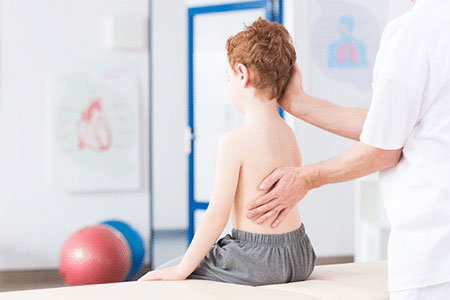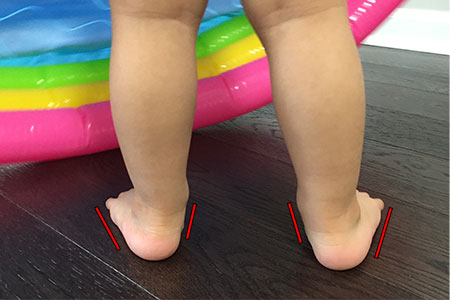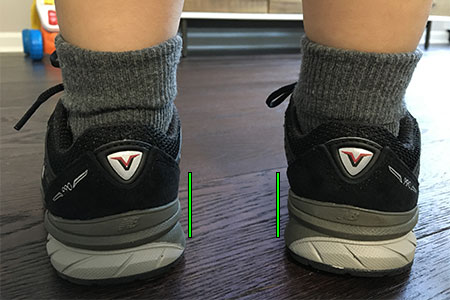Can Shoes Help Children with W Sitting Position? – What a Difference These Shoes Can Make!

Have you noticed your child sitting with the legs in a w-shaped position and you are wondering whether it is bad for your child to be sitting this way? Children who sit in a w position might be dealing with low muscle tone, hypermobility, or pigeon toes. Do you know what all of these 3 conditions have in common? They can be treated by wearing the correct type of shoes, and in certain cases orthotics as well.
Is the W Sitting Position Harmful? – Watch Out for Underlying Conditions
Most children who sit in a W position are probably doing it to make up for weaknesses they may have in their hips and trunk. Moreover, sitting in a W position for extended periods of time is a sign that your child might have any of the following conditions:
- Tight muscles in the legs and hips: Look closely at your child’s walking gait and make sure your child is not walking pigeon-toed or with the feet turned in.
- Low Muscle Tone: Check whether your child has frequent falls, delayed gross motor skills, or overall poor posture.
- Hypermobility: Your child’s feet might be flat and your child complains about pain or stiffness. Check whether your child has poor balance and coordination.

Why Your Child Should Not Sit in the W Position? – Long-Term Foot Issues!
Allowing your child to sit in the W position for prolonged periods of time can lead to tight muscles in the legs and hips. If the muscles are tight, they may inhibit normal motion, affecting your child’s walking gait and balance. The w-sitting position can cause your child to start walking “pigeon toed” which will affect your child’s overall posture and lead to foot, leg, and lower back pain in the future.
How to Help a Child Who Sits in the W Position? – An Effective Approach!
I have seen many cases of families who explain to me how their children used to sit in the w-position and now the child is walking pigeon toed and experiencing poor posture habits. In some of these cases, the parent used to sit in a w position as well as a child and now is dealing with foot, leg, and lower back pain. Keep in mind that for every parent saying that they’ve had a problem related to w-sitting, there is another parent who says that they have never experienced any consequences from sitting this way. However, why take the risk of your child developing foot and/or leg conditions in the future from something that can be easily treated?
How Can W Sitting Be Prevented? – Learn How to Stop The W-Sitting Position
The first approach I recommend taking is to suggest to your child other ways to sit such as:
- Long sitting
- Side sitting
- Criss-Cross or tailor sitting
- Sitting on a small bench
Consistency is so important!
Shoes for Kids Who Sit in W Position – What a Difference These Shoes Can Make!
You don’t need to invest in a pair of orthopedic shoes, just regular everyday sneakers that simply provide better support than others. The correct pair of shoes is not going to prevent your child from sitting in a w position, but the shoes will help improve your child’s walking gait and overall posture.
I have fitted certain shoes that help align the child’s feet and improve the overall posture of the child while allowing the child’s muscles to develop on their own. For example, let me show you an example of a child who is pigeon toed and has walking and posture problems. The first image shows the child standing barefoot:

Now let’s take a look at a picture of the same child wearing a pair of supportive shoes I recommend. Do you notice how the feet are a lot straighter? This is going to allow the child to walk and run straighter, and improve the child’s overall posture at the same time.

Not all shoes are going to be effective and help your child walk and run straighter, since what works for one child may not work for another. In most cases, the correct type of shoes will make a tremendous difference in a child’s walking gait and overall posture.
Would You Rather Receive Specific Shoe Recommendations?
If you want to provide your child with a pair of supportive shoes to improve your child’s walking gait and overall posture, you can email me at fittingchildrensshoes@gmail.com and I will be able to send you specific shoe recommendations.
I am going to need to know your child’s shoe size and whether your child has narrow, medium, wide, or extra wide feet. If you are unsure about your child’s foot shape you can use a virtual shoe fitting service that will help you retrieve your child’s shoe size from home.
I want to share some feedback from parents who sat in a w position as children and are experiencing the consequences later in life. Their experiences are not to scare you, just to make you more aware of why it’s important to not let your child sit in the w position for longer periods of time. I will also share the feedback of individuals who sat in a W position and experienced no issues at all.
Sitting in W Position – Feedback
“My husband used to sit in the w position throughout his childhood and now he had both of his hips replaced in his forties. He walks with his feet turned in and has to wear orthotics inside of his shoes.”
“I have low muscle tone and w-sat throughout my childhood and into my adult life. Now I am 40 and have to constantly deal with hip and knee problems. My daughter was diagnosed with low muscle tone and tries to w-sit, but I strongly discouraged it”.
“I am in my thirties recovering from w-sitting as a child. I have to deal with in-toeing issues now and as I am advancing in age I’m feeling the effects in my knees, hips, and feet. I wish I would have been offered intervention as a kid. I now need to wear special shoes with orthotics or I start feeling foot and leg pain.”
“I am a 35-year-old man who sat in the w position constantly, and actually still do…I’ve never experienced any hip or knee problems.”
“I have sat like this for the last 50 years and I have more than perfect posture and no signs of foot, leg, or back pain”.
Be attentive to your child’s sitting position to prevent your child from putting extra stress on the hips and joints. Sitting in the w position can also tighten and shorten certain legs muscles.
Additional Resources for Children with Foot Conditions
I strongly believe that the correct type of shoes can help improve your child’s walking gait and overall posture by allowing your child to walk and run straighter. There are certain shoes that are also really effective in treating underlying diseases such as hypermobilty and low muscle tone.
Many children who sit in w position have issues with their hips, feet and legs. The earlier you realize what condition your child has, the better. Early treatment is key when addressing issues with flat feet, hip dysplasia, low muscle tone, or hypermobility. Most of these issues can be treated by providing the child with specific shoes, orthotics and physical therapy.
There is no magic cure to prevent your child from sitting in the w position. You will have to keep reminding and discouraging your child from sitting in that position.
